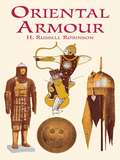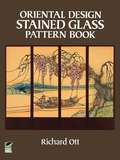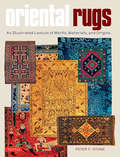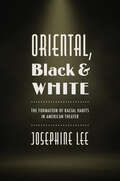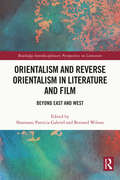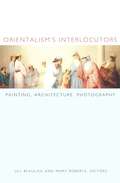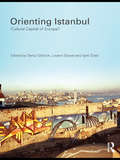- Table View
- List View
Organizzare una festa da vero professionista
by Richard G Lowe Jr Silvia LiguoriGli anni precedenti la scomparsa di mia moglie, ero una di quelle persone che si possono definire introverse. Lavoravo nell'industria informatica, dipingevo miniature di fantasia, collezionavo francobolli ed ero un lettore appassionato. Il filo conduttore di tutte queste attività era il fatto che non fossero coinvolte altre persone. Tutto è cambiato però dopo la morte di mia moglie. La sensazione di dolore era devastante e dovevo fare qualcosa per uscire da quel tunnel oscuro e profondo. Coloro tra voi che hanno vissuto un lutto possono comprendere quel che sto dicendo. Il lutto è un luogo pericoloso in cui sprofondare: in esso non c'è proprio niente di salutare. Mi sono avvicinato alla fotografia e sono andato a immortalare la natura nei parchi nazionali, statali e locali della California del sud. Ho iniziato ad andare alle fiere, soprattutto al Festival rinascimentale locale. Mi sono imposto di essere più “social” e socievole, nonostante questo andasse contro una personale mentalità introversa. Ho iniziato a partecipare alle feste. Anche prima ovviamente ero stato ad altre feste, ma in generale ero parecchio riluttante e non mi fermavo mai troppo a lungo. Arrivavo senza buttarmi subito nella mischia e spesso gli altri invitati non si accorgevano nemmeno che fossi lì anch'io. Ora è tutto diverso per me. Quel tunnel oscuro di dolore non faceva per me. Stare all'aria aperta e frequentare altra gente mi ha guidato verso la mia rinascita. La cosa interessante dei festival rinascimentali è la natura sociale delle persone coinvolte. In men che non si dica ero diventato già il fotografo ufficiale del Festival del Rinascimento e mi invitavano alle loro feste ed eventi sociali. Un mondo completamente nuovo per me, un mondo di socializzazione con altre persone. All'inizio, non avevo la minima idea di cosa fare e mi sentivo un po' spaesato. Dopo aver conosciuto nuova gente a feste ed eventi, si è aperto uno spiraglio e ho ricominciato a divertirmi.
Organízate de manera sencilla: Toma el control sobre tu tiempo y tu vida
by John Dristall Tara Dristall Álvaro Gutiérrez SanchezEste libro te ayudará a organizarte a través de métodos sencillos. No necesitas un complicado sistema para planificar el tiempo, ni una agenda llena de todas las tareas que tienes que hacer, explicadas hasta el más mínimo detalle. Lo que necesitas es un método que funcione sin llegar a convertirse en una carga. Los autores dan consejos prácticos para que aprendas a mejorar la organización en todos los aspectos de tu vida: - Cómo ordenar tu escritorio y tus papeles. - Cómo aprovechar al máximo las ventajas de tu ordenador y tu smartphone sin dejar que estos te controlen. - Cómo controlar mejor tus finanzas. - Consejos rápidos para limpiar tu casa de trastos. - Cómo planificar mejor tu tiempo. - Cómo organizar la vida en familia. Los autores incluyen un cuestionario de autoevaluación al comienzo de cada capítulo para que puedas comprobar cómo vas y dónde puedes mejorar en cada aspecto. Este libro te enseñará a encargarte de los detalles, liberarte de la presión provocada por el exceso de compromisos y a encontrar una mayor satisfacción en tu vida.
Oriental Armour (Dover Military History, Weapons, Armor)
by H. Russell RobinsonDetailed, scholarly survey of defensive armour used in the Middle East and Asia -- from the scale armour of ancient Egypt to Japanese "modern" armour of the 19th century. Over 300 line illustrations and over 100 photos depict armour of Persia, Turkey, India, China, Ceylon, the Philippines, Korea, Tibet, and other regions.
Oriental Design Stained Glass Pattern Book
by Richard OttA peacock proudly spreading its plumage, a geisha strolling under a drift of peach blossoms, a mandarin duck paddling by a footbridge, a butterfly taking flight from a peony blossom, Japanese boatmen plying a tranquil lake -- these are only a few of the charming subjects in this versatile collection of Oriental designs created especially for artists who work in stained glass. You'll find forty-seven different designs in this rich new treasury, each finding its inspiration in the peace and harmony of nature, each meticulously prepared for the exacting needs of the stained glass craft.The patterns may be reduced, enlarged, or otherwise modified for a wide variety of stained glass projects: windows, lightcatchers, mirrors, lampshades, lightboxes, and more. A special feature presents patterns for four complete four-paneled screens of the type traditionally used in Japanese dwellings, with beautiful subjects such as distant figures on horseback moving through a summer landscape and herons nestled in a grove of cypress trees. They are presented here in four generous double-page spreads.Combining the delicate and tranquil beauty of Oriental design with the luminous appeal of stained glass artistry, this unique pattern book will provide endless pleasure and a stimulating challenge to all who work in this time-honored medium.
Oriental Rugs
by Peter F. StoneThis monumental reference work--long awaited by collectors and scholars--fills an important gap in the available literature on oriental rugs. Lavishly illustrated with over 1000 photographs and drawings, it offers clear and precise definitions for the rug and textile terms in use across a broad swath of the globe--from Morocco to Turkey, Persia, the Caucasus region, Central Asia, Afghanistan, Pakistan, India and China. Covering priceless museum-quality rug traditions as well as modern centers of production, Oriental Rugs draws on classical scholarship as well as current terminology in use among producers and traders in these areas today. It focuses primarily on the rich hand-knotting and hand-weaving traditions of the Near East and Central Asia, but also includes some examples of Scandinavian and Native American weavings.Rugs are receiving ever-increasing attention and recognition in the field of art history. Tribal weavings especially have become a focus for new research, and Oriental Rugs provides a new understanding of many distinctive traditions that were previously understudied, such as the weavings of southwest Persia, Baluchistan and Kurdistan. A concise reference, this volume is a must-have for serious collectors and scholars.
Oriental Rugs
by Peter F. StoneThis monumental reference work--long awaited by collectors and scholars--fills an important gap in the available literature on oriental rugs. Lavishly illustrated with over 1000 photographs and drawings, it offers clear and precise definitions for the rug and textile terms in use across a broad swath of the globe--from Morocco to Turkey, Persia, the Caucasus region, Central Asia, Afghanistan, Pakistan, India and China. Covering priceless museum-quality rug traditions as well as modern centers of production, Oriental Rugs draws on classical scholarship as well as current terminology in use among producers and traders in these areas today. It focuses primarily on the rich hand-knotting and hand-weaving traditions of the Near East and Central Asia, but also includes some examples of Scandinavian and Native American weavings.Rugs are receiving ever-increasing attention and recognition in the field of art history. Tribal weavings especially have become a focus for new research, and Oriental Rugs provides a new understanding of many distinctive traditions that were previously understudied, such as the weavings of southwest Persia, Baluchistan and Kurdistan. A concise reference, this volume is a must-have for serious collectors and scholars.
Oriental Rugs
by Peter F. StoneThis monumental reference work--long awaited by collectors and scholars--fills an important gap in the available literature on oriental rugs. Lavishly illustrated with over 1000 photographs and drawings, it offers clear and precise definitions for the rug and textile terms in use across a broad swath of the globe--from Morocco to Turkey, Persia, the Caucasus region, Central Asia, Afghanistan, Pakistan, India and China. Covering priceless museum-quality rug traditions as well as modern centers of production, Oriental Rugs draws on classical scholarship as well as current terminology in use among producers and traders in these areas today. It focuses primarily on the rich hand-knotting and hand-weaving traditions of the Near East and Central Asia, but also includes some examples of Scandinavian and Native American weavings.Rugs are receiving ever-increasing attention and recognition in the field of art history. Tribal weavings especially have become a focus for new research, and Oriental Rugs provides a new understanding of many distinctive traditions that were previously understudied, such as the weavings of southwest Persia, Baluchistan and Kurdistan. A concise reference, this volume is a must-have for serious collectors and scholars.
Oriental Rugs a Complete Guide
by Charles W. JacobsenThis authoritative reference contains a vast amount of information about Oriental rugs.<P><P>Oriental Rugs: A Complete Guide is the first large volume on the subject to be printed in the past forty-five years is meant for the individual who is interested in purchasing his first Oriental Rug, as well as the collector, museum, and rug importer.The volume is divided into three main parts. Part I, entitled "General Discussion devotes one chapter to each of the large rug weaving countries and includes helpful hints as to what the rug buyer should look for in an particular rug.Part II, "Description of Types," is an alphabetical list of all the names that have been used to identify rugs in the past, as well as the names that are being used at present. Each entry is followed by a full discussion and description of the rug.Part III, "Plates," contains 194 pictures of different types of rugs, complete with descriptive captions for each. Thirty-nine of the plates are in full color. All of the plates are large, allowing the reader to see the design, and in some cases, the colors used in the particular rug.
Oriental, Black, and White: The Formation of Racial Habits in American Theater
by Josephine LeeIn this book, Josephine Lee looks at the intertwined racial representations of nineteenth- and early twentieth-century American theater. In minstrelsy, melodrama, vaudeville, and musicals, both white and African American performers enacted blackface characterizations alongside oriental stereotypes of opulence and deception, comic servitude, and exotic sexuality. Lee shows how blackface types were often associated with working-class masculinity and the development of a nativist white racial identity for European immigrants, while the oriental marked what was culturally coded as foreign, feminized, and ornamental. These conflicting racial connotations were often intermingled in actual stage performance, as stage productions contrasted nostalgic characterizations of plantation slavery with the figures of the despotic sultan, the seductive dancing girl, and the comic Chinese laundryman. African American performers also performed common oriental themes and characterizations, repurposing them for their own commentary on Black racial progress and aspiration. The juxtaposition of orientalism and black figuration became standard fare for American theatergoers at a historical moment in which the color line was rigidly policed. These interlocking cross-racial impersonations offer fascinating insights into habits of racial representation both inside and outside the theater.
Orientalism Transposed: Impact of the Colonies on British Culture (Routledge Revivals)
by Julie F. Codell Dianne Sachko MacleodFirst published in 1998, this volume reflects that, ever since the publication of Edward Said’s Orientalism twenty years ago, scholars have tested his thesis against the wider application of his terms to cultural practices and the rhetoric of power. The cultural impact of the British on their colonies has been extensively investigated but only recently have scholars begun to ask in what ways British culture was transformed by its contact with the colonies. The essays in this volume demonstrate how influential the Empire was on British culture from the late eighteenth to early twentieth centuries. They show how, from cross-cultural cross-dressing to Buddhism, British artists and writers appropriated unfamiliar and challenging aspects of the culture of the Empire for their own purposes. An examination is also made of the extent to which colonized people engaged in the orientalising discourse, amending and subverting it, even re-applying its stereotypes to the British themselves. Finally, two essays explore instances of the exchange of ideas between colonies. Several of the essays are based on papers given at the 1996 Conference of the College Arts Association.
Orientalism and Reverse Orientalism in Literature and Film: Beyond East and West (Routledge Interdisciplinary Perspectives on Literature)
by Sharmani Patricia Gabriel Bernard WilsonAcknowledging the significance of Edward Said’s Orientalism for contemporary discourse, the contributors to this volume deconstruct, rearrange, and challenge elements of his thesis, looking at the new conditions and opportunities offered by globalization. What can a renewed or reconceptualized Orientalism teach us about the force and limits of our racial imaginary, specifically in relation to various national contexts? In what ways, for example, considering our greater cross-cultural interaction, have clichés and stereotypes undergone a metamorphosis in contemporary societies and cultures? Theoretically, and empirically, this book offers an expansive range of contexts, comprising the insights, analytical positions, and perspectives of a transnational team of scholars of comparative literature and literary and cultural studies based in Australia, Hong Kong, Japan, Malaysia, USA, Singapore, Taiwan, and Turkey. Working with, through and beyond Orientalism, they examine a variety of cultural texts, including the novel, short story, poetry, film, graphic memoir, social thought, and life writing. Making connections across centuries and continents, they articulate cultural representation and discourse through multiple approaches including critical content analysis, historical contextualization, postcolonial theory, gender theory, performativity, intertextuality, and intersectionality. Given its unique approach, this book will be essential reading for scholars of literary theory, film studies and Asian studies, as well as for those with a general interest in postcolonial literature and film.
Orientalism's Interlocutors: Painting, Architecture, Photography
by Jill Beaulieu Mary RobertsUntil now, Orientalist art--exemplified by paintings of harems, slave markets, or bazaars--has predominantly been understood to reflect Western interpretations and to perpetuate reductive, often demeaning stereotypes of the exotic East. Orientalism's Interlocutors contests the idea that Orientalist art simply expresses the politics of Western domination and argues instead that it was often produced through cross-cultural interactions. Focusing on paintings and other representations of North African and Ottoman cultures, by both local artists and westerners, the contributors contend that the stylistic similarities between indigenous and Western Orientalist art mask profound interpretive differences, which, on examination, can reveal a visual language of resistance to colonization. The essays also demonstrate how marginalized voices and viewpoints--especially women's--within Western Orientalism decentered and destabilized colonial authority. Looking at the political significance of cross-cultural encounters refracted through the visual languages of Orientalism, the contributors engage with pressing recent debates about indigenous agency, postcolonial identity, and gendered subjectivities. The very range of artists, styles, and forms discussed in this collection broadens contemporary understandings of Orientalist art. Among the artists considered are the Algerian painters Azouaou Mammeri and Mohammed Racim; Turkish painter Osman Hamdi; British landscape painter Barbara Bodichon; and the French painter Henri Regnault. From the liminal "Third Space" created by mosques in postcolonial Britain to the ways nineteenth-century harem women negotiated their portraits by British artists, the essays in this collection force a rethinking of the Orientalist canon. This innovative volume will appeal to those interested in art history, theories of gender, and postcolonial studies. Contributors. Jill Beaulieu, Roger Benjamin, Zeynep Çelik, Deborah Cherry, Hollis Clayson, Mark Crinson, Mary Roberts
Orientalist Aesthetics: Art, Colonialism, and French North Africa, 1880-1930
by Roger BenjaminThis book is a history of Orientalist art during the period of high modernism. Roger Benjamin, drawing on a decade of research in untapped archives, introduces many unfamiliar paintings, posters, miniatures, and panoramas and discovers an art movement closely bound to French colonial expansion.
Orienting Istanbul: Cultural Capital of Europe? (Planning, History and Environment Series)
by Deniz GöktürkLooking at the globalization, urban regeneration, arts events and cultural spectacles, this book considers a city not until now included in the global city debate. Divided into five parts, each preceded by an editorial introduction, this book is an interdisciplinary study of an iconic city, a city facing conflicting social, political and cultural pressures in its search for a place in Europe and on the world stage in the twenty-first century.
Orienting Italy: China through the Lens of Italian Filmmakers (SUNY series, Horizons of Cinema)
by Mary Ann McDonald CarolanWinner of the 2022 Book Award for Performance and Visual Culture presented by the American Association of Teachers of ItalianOrienting Italy explores contemporary Italian filmmakers' fascination with China and the Chinese in both documentary and fictional films. Delineating the contours of this fascination, the book begins with the works of Carlo Lizzani (Behind the Great Wall, 1958) and Michelangelo Antonioni (Chung Kuo—China, 1972), both of whom ventured to China with the aim of documenting new, yet physically and culturally distant, realities. Their documentary investigations yielded to fictional portrayals, from the lavish view of a historical Middle Kingdom by director Bernardo Bertolucci (The Last Emperor, 1987) to the stark consideration of Italian economic exchange with contemporary China by Gianni Amelio (The Missing Star, 2006). The wave of Chinese migration to Italy in the late twentieth century created a new sense of otherness within Italy as Chinese migrants became the subjects of fictional narratives and documentaries in the works of Stefano Incerti (Gorbaciof, 2010) and Andrea Segre (Shun Li and the Poet, 2011) and Riccardo Cremona and Vincenzo De Cecco (Miss Little China, 2009). In the twenty-first century, a new chapter in the relationship between Italy and China has emerged in the form of transnational collaborations in the art and business of filmmaking.
Origami 101: Master Basic Skills and Techniques Easily through Step-by-Step Instruction (Look, Learn & Create)
by Benjamin John ColemanFor the absolute beginner: more than forty amazing folding projects, including models that evolve from one of four basic origami shapes.Have you always been intrigued by origami, but often found the diagrams confusing or the models uninspiring? Origami 101 is here to help.A revolutionary illustration enhancement called Glow Fold makes the diagrams and video steps easy to understand. With the introduction of every folding symbol, you'll find a detailed sidebar explaining what it means and a symbol index bookmark that guides you to these sidebars whenever you need to be reminded. If you need more help, just go directly to companion online video for any model.Just a few of things you'll learn to create:Roosting RobinFlowering BranchFlying DragonSea TurtleTyrannosaurus RexTree OrnamentTropical FishGraceful SwanWith the help of origami enthusiast Benjamin Coleman, you'll learn how this classic craft can be enjoyed by all ages. Amuse yourself and delight your friends with these captivating folded figures!"The glow-fold technique will be a valuable aid to paper folders of all levels who are learning a new model through diagrams." —Vanessa Gould, director of the Peabody Award‚Äìwinning documentary Between the Folds
Origami Activities
by Michael G. LafosseChildren will have hours of fun with the 15 projects in this beginner origami book, designed to introduce them to the exciting world of paper-folding. A crane, a bat, and a lotus-topped gift box are just a few of the simple projects for first-time paper folders. The book includes an introduction to origami that explores its history, the kinds of paper used, preparation, and basic folding techniques. Each of the projects explores a different aspect of Asian culture. Origami is a wonderful way to stimulate a child's imagination and their interest in Asian art.Paper not included.
Origami Activities
by Michael G. LafosseChildren will have hours of fun with the 15 projects in this beginner origami book, designed to introduce them to the exciting world of paper-folding. A crane, a bat, and a lotus-topped gift box are just a few of the simple projects for first-time paper folders. The book includes an introduction to origami that explores its history, the kinds of paper used, preparation, and basic folding techniques. Each of the projects explores a different aspect of Asian culture. Origami is a wonderful way to stimulate a child's imagination and their interest in Asian art.Paper not included.
Origami Activities
by Michael G. LafosseFold classic origami projects and learn about Asian culture with this easy origami book.Origami, the Japanese art of folding paper, is not just a great crafts activity--it's an exciting way to expand the imagination. Children will have hours of fun with this beginner origami paper craft book. Renowned origami artist and author Michael LaFosse designed Origami Actives to introduce them to the exciting world of paper folding. What makes this origami origami book original is that each paper project explores a distinct aspect of East Asian culture and includes an explanation of the cultural context for each project. The designs are very simple and are great for beginning origami folders. They can be considered origami-for-kids projects and are a great way to learn origami.This origami book contains:64 page, full-color origami book Easy, step-by-step instructions Origami techniques and folding tips 15 fun and easy designs Cultural background and explanations of projects Once you've folded your own origami, you can use them to create one-of-a-kind origami scenes.Origami projects include: Lotus Flower Japanese Fan Chopstick Wrapper Dollar-Bill Dragon Chinese Zodiac Traditional Crane Japanese Daruma Doll And many more...
Origami Activities
by Michael G. LafosseFold classic origami projects and learn about Asian culture with this easy origami book.Origami, the Japanese art of folding paper, is not just a great crafts activity--it's an exciting way to expand the imagination. Children will have hours of fun with this beginner origami paper craft book. Renowned origami artist and author Michael LaFosse designed Origami Actives to introduce them to the exciting world of paper folding. What makes this origami origami book original is that each paper project explores a distinct aspect of East Asian culture and includes an explanation of the cultural context for each project. The designs are very simple and are great for beginning origami folders. They can be considered origami-for-kids projects and are a great way to learn origami.This origami book contains:64 page, full-color origami book Easy, step-by-step instructions Origami techniques and folding tips 15 fun and easy designs Cultural background and explanations of projects Once you've folded your own origami, you can use them to create one-of-a-kind origami scenes.Origami projects include: Lotus Flower Japanese Fan Chopstick Wrapper Dollar-Bill Dragon Chinese Zodiac Traditional Crane Japanese Daruma Doll And many more...
Origami Activities
by Michael G. LafosseFold classic origami projects and learn about Asian culture with this easy origami book.Origami, the Japanese art of folding paper, is not just a great crafts activity--it's an exciting way to expand the imagination. Children will have hours of fun with this beginner origami paper craft book. Renowned origami artist and author Michael LaFosse designed Origami Actives to introduce them to the exciting world of paper folding. What makes this origami origami book original is that each paper project explores a distinct aspect of East Asian culture and includes an explanation of the cultural context for each project. The designs are very simple and are great for beginning origami folders. They can be considered origami-for-kids projects and are a great way to learn origami.This origami book contains:64 page, full-color origami book Easy, step-by-step instructions Origami techniques and folding tips 15 fun and easy designs Cultural background and explanations of projects Once you've folded your own origami, you can use them to create one-of-a-kind origami scenes.Origami projects include: Lotus Flower Japanese Fan Chopstick Wrapper Dollar-Bill Dragon Chinese Zodiac Traditional Crane Japanese Daruma Doll And many more...
Origami Activities For Children
by Chiyo ArakiIdeal for home or school use, these fun projects are organized by seasons and U.S. holidays and offer varying levels of difficulty so that every child--from the beginner to the experienced origami-maker--will find something of interest. There are three types of boats for Columbus Day, cats and jack-o-lanterns for Halloween, and even old Saint Nick.
Origami Activities For Children
by Chiyo ArakiIdeal for home or school use, these fun projects are organized by seasons and U.S. holidays and offer varying levels of difficulty so that every child--from the beginner to the experienced origami-maker--will find something of interest. There are three types of boats for Columbus Day, cats and jack-o-lanterns for Halloween, and even old Saint Nick.
Origami Activities For Children
by Chiyo ArakiMake simple origami-for-kids projects with this easy origami book.Ideal for home or school use, Origami Activities for Children is a classic origami paper craft book that includes fun projects organized by seasons and U.S. holidays and offers varying levels of difficulty so that every child--from the origami beginner to the experienced paper folder--will find something of interest. Teachers will also find this origami book to be a great help in their classroom. Colorful examples, suggested grade levels, time requirement, and necessary materials have been included as teaching aids.There are a total of 20 fun-to-do projects including three types of boats for Columbus Day, Jack-O-Lanterns for Halloween, Old Saint Nick and much more! Each project has clear step-by-step instructions and fully colored, easy-to-follow diagrams making this affordable origami book a great way to learn origami!This origami book contains: 64 page, full-color book 20 fun children's origami projects Step-by-step instructions Detailed diagrams and drawingsOrigami brings out the creative and imaginative skills of young children, while requiring only the simplest materials. Kids will love showing their friends and family all their new origami creations.Origami projects include: Jack O'Lantern Santa Claus Box with Valentine Clown Carnation Flower And many more...
Origami Activities For Children
by Chiyo ArakiMake simple origami-for-kids projects with this easy origami book.Ideal for home or school use, Origami Activities for Children is a classic origami paper craft book that includes fun projects organized by seasons and U.S. holidays and offers varying levels of difficulty so that every child--from the origami beginner to the experienced paper folder--will find something of interest. Teachers will also find this origami book to be a great help in their classroom. Colorful examples, suggested grade levels, time requirement, and necessary materials have been included as teaching aids.There are a total of 20 fun-to-do projects including three types of boats for Columbus Day, Jack-O-Lanterns for Halloween, Old Saint Nick and much more! Each project has clear step-by-step instructions and fully colored, easy-to-follow diagrams making this affordable origami book a great way to learn origami!This origami book contains: 64 page, full-color book 20 fun children's origami projects Step-by-step instructions Detailed diagrams and drawingsOrigami brings out the creative and imaginative skills of young children, while requiring only the simplest materials. Kids will love showing their friends and family all their new origami creations.Origami projects include: Jack O'Lantern Santa Claus Box with Valentine Clown Carnation Flower And many more...


